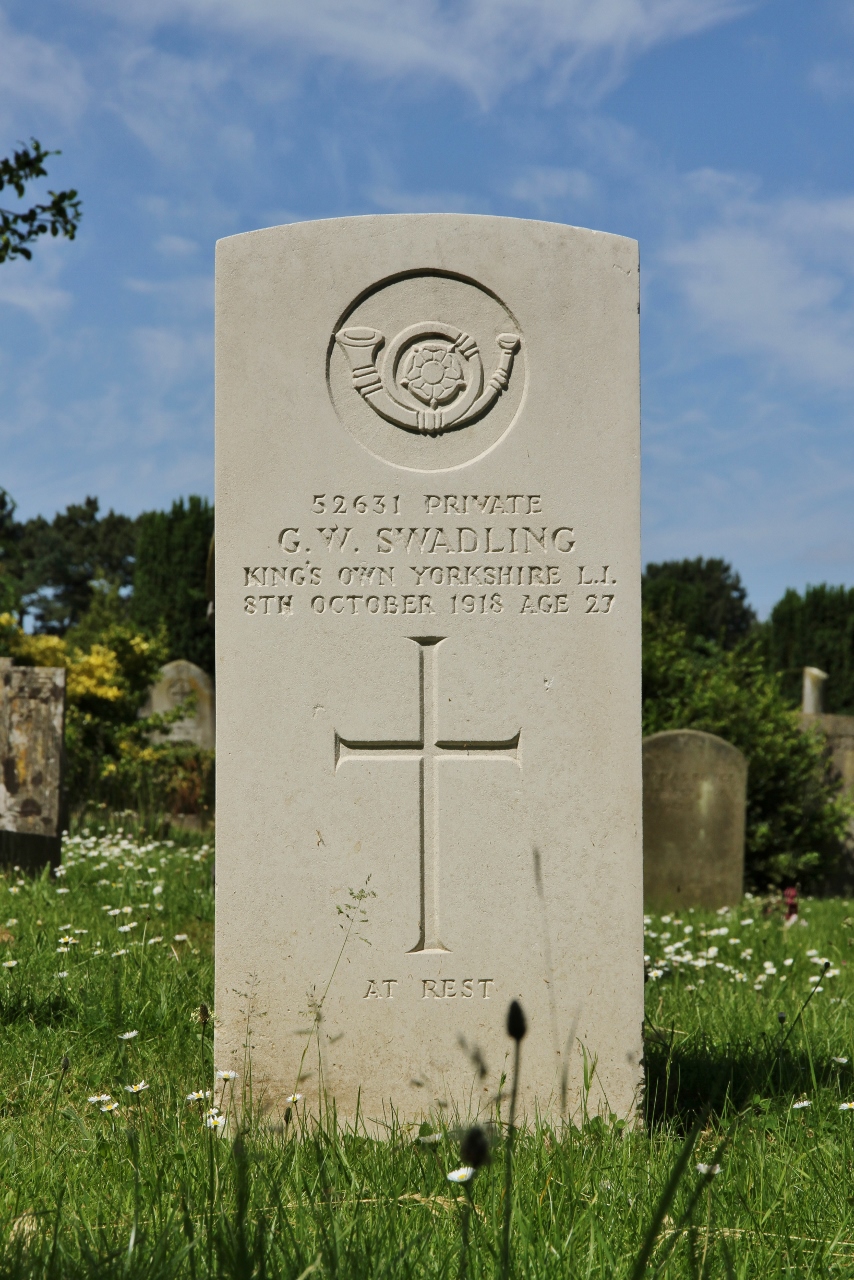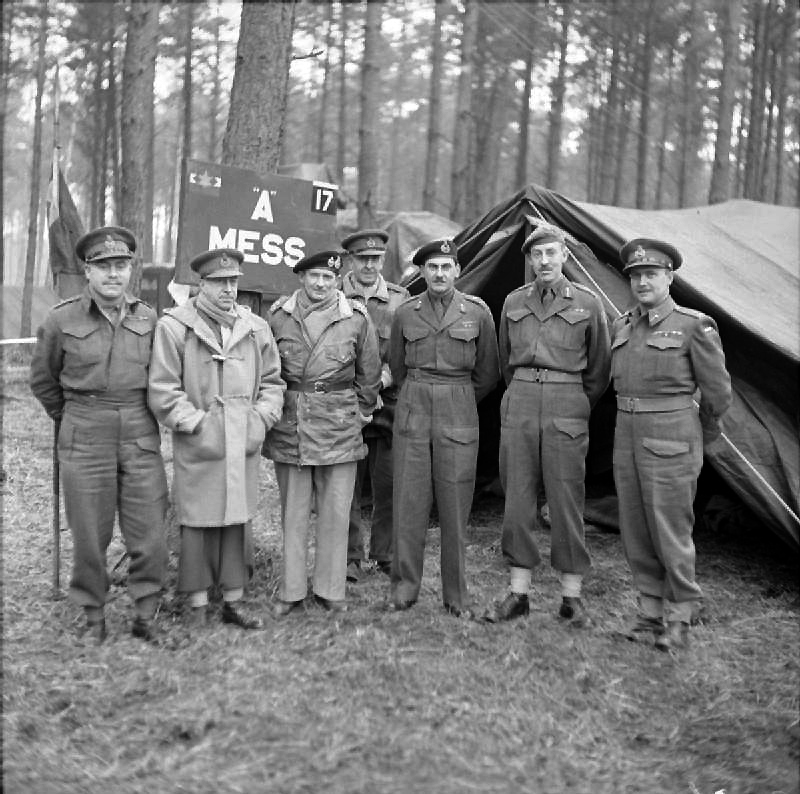|
The Saskatoon Light Infantry
The Saskatoon Light Infantry was an infantry regiment of the Non-Permanent Active Militia of the Canadian Militia (now the Canadian Army). The regiment was formed in 1924, when The North Saskatchewan Regiment (1920–1924) was reorganized into four separate regiments. In 1955, the regiment was Amalgamated with The Prince Albert and Battleford Volunteers to form The North Saskatchewan Regiment. Lineage * Originated on 1 April 1912, in Saskatoon, Saskatchewan, as the 105th Regiment. * Redesignated on 16 September 1912, as the 105th Regiment Fusiliers. * Redesignated on 15 April 1914, as the 105th Regiment (Saskatoon Fusiliers). * Amalgamated on 15 March 1920, with the 52nd Regiment Prince Albert Volunteers and Redesignated as The North Saskatchewan Regiment. * Reorganized on 15 May 1924, as four separate regiments: The Yorkton Regiment (now the 64th Field Battery, 10th Field Artillery Regiment, RCA), The Battleford Light Infantry, The Prince Albert Volunteers, and The Saskatoon ... [...More Info...] [...Related Items...] OR: [Wikipedia] [Google] [Baidu] |
65th Battalion (Saskatchewan), CEF
The 65th Battalion (Saskatchewan), CEF was an infantry battalion of the Canadian Expeditionary Force during the Great War. The 65th Battalion was authorized on 20 April 1915 and embarked for Great Britain on 18 June 1916. Its personnel were absorbed by the 44th Battalion (Manitoba), CEF, 46th Battalion (South Saskatchewan), CEF, 54th Battalion (Kootenay), CEF and 72nd Battalion (Seaforth Highlanders of Canada), CEF of the 4th Canadian Division on 30 June 1916. The battalion was disbanded on 12 October 1917.Canadian Forces Publication A-DH-267-003 Insignia and Lineages of the Canadian Forces. Volume 3: Combat Arms Regiments.Meek, John F. ''Over the Top! The Canadian Infantry in the First World War.'' Orangeville, Ont.: The Author, 1971. The 65th Battalion recruited in Saskatoon and Prince Albert, Saskatchewan and Winnipeg, Manitoba and was mobilized at Saskatoon. The 65th Battalion was commanded by Lt.-Col. N. Lang from 20 July 1916 to 25 September 1916. The 65th Battalion was aw ... [...More Info...] [...Related Items...] OR: [Wikipedia] [Google] [Baidu] |
The Seaforth Highlanders Of Canada
, colors = , colors_label = , march = "The Piobaireachd of Donald Dhu" , mascot = , equipment = , equipment_label = , battles = First World WarSecond World WarWar in Afghanistan , anniversaries = , decorations = , battle_honours = See #Battle honours , commander1 = Vacant , commander1_label = Colonel-in-chief , commander2 = , commander2_label = , commander3 = , commander3_label = , website = , identification_symbol_2 Seaforth MacKenzie, identification_symbol_2_label = Tartan , identification_symbol_4 = Seaforth of C , identification_symbol_4_label = Abbreviation The Seaforth Highlanders of Canada is a Primary Reserve infantry regim ... [...More Info...] [...Related Items...] OR: [Wikipedia] [Google] [Baidu] |
The King's Own Yorkshire Light Infantry
The King's Own Yorkshire Light Infantry (KOYLI) was a light infantry regiment of the British Army. It officially existed from 1881 to 1968, but its predecessors go back to 1755. In 1968, the regiment was amalgamated with the Somerset and Cornwall Light Infantry, the King's Shropshire Light Infantry and the Durham Light Infantry to form The Light Infantry, which in turn was merged with the Devonshire and Dorset Regiment, the Royal Gloucestershire, Berkshire and Wiltshire Regiment and the Royal Green Jackets to become The Rifles in 2007. History The 51st Foot The 53rd Regiment of Foot was raised in Leeds in 1755 and renumbered the 51st in January 1757. In 1782, in common with other regiments of the line, the 51st was given a "county" designation, becoming the 51st (2nd Yorkshire, West Riding) Regiment of Foot. The title of ''Light Infantry'' was given in honour of its former commander General Sir John Moore in 1809, and in 1821 the regiment was given royal status when ''King's Own' ... [...More Info...] [...Related Items...] OR: [Wikipedia] [Google] [Baidu] |
Melfort, Saskatchewan
Melfort (Canada 2016 Census, 2016 population 5,992) is a city in Saskatchewan, Canada, located approximately southeast of Prince Albert, Saskatchewan, Prince Albert, northeast of Saskatoon and north of Regina, Saskatchewan, Regina. Melfort became Saskatchewan's 12th city in 1980. Melfort was formerly called the "City of Northern Lights" due to the frequency with which the aurora borealis appears. However, in 2016, Melfort became "Play Melfort" due to its vast recreation programs and facilities. The city is bordered by the Rural Municipality of Star City No. 428 and the Rural Municipality of Flett's Springs No. 429. It is also the administrative headquarters of the Peter Chapman Cree#In Canada, First Nation band government. History A few kilometres southeast of current location of Melfort settlers established themselves on the banks of Stoney Creek before relocation due to the surveying of the Canadian Northern Railway. Melfort was named to honour Mrs. Reginald Beatty (née ... [...More Info...] [...Related Items...] OR: [Wikipedia] [Google] [Baidu] |
Saskatoon
Saskatoon () is the largest city in the Provinces and territories of Canada, Canadian province of Saskatchewan. It straddles a bend in the South Saskatchewan River in the central region of the province. It is located along the Trans-Canada Highway, Trans-Canada Yellowhead Highway, and has served as the cultural and economic hub of central Saskatchewan since its founding in 1882 as a Temperance movement, Temperance colony. With a Canada 2021 Census, 2021 census population of 266,141, Saskatoon is the List of cities in Saskatchewan, largest city in the province, and the List of census metropolitan areas and agglomerations in Canada, 17th largest Census Metropolitan Area in Canada, with a 2021 census population of 317,480. Saskatoon is home to the University of Saskatchewan, the Meewasin Valley Authority (which protects the South Saskatchewan River and provides for the city's popular riverbank park spaces), and Wanuskewin Heritage Park (a National Historic Site of Canada and UNES ... [...More Info...] [...Related Items...] OR: [Wikipedia] [Google] [Baidu] |
First Canadian Army
The First Canadian Army (french: 1reArmée canadienne) was a field army and a formation of the Canadian Army in World War II in which most Canadian elements serving in North-West Europe were assigned. It served on the Western Front from July 1944 until May 1945. The army was formed in early 1942, replacing the existing unnumbered Canadian Corps, as the growing contribution of Canadian forces to serve with the British Army in the United Kingdom necessitated an expansion to two corps. By the end of 1943 Canadian formations consisted of three infantry divisions, two armoured divisions and two independent armoured brigades. The first commander was Lieutenant-General A. G. L. "Andy" McNaughton, who was replaced in 1944 by General H. D. G. "Harry" Crerar. Both had been senior Royal Regiment of Canadian Artillery officers in the Canadian Corps in the Great War. Allied formations of other nationalities were added to the First Canadian Army to keep it at full strength.Harris, Stephen"Fir ... [...More Info...] [...Related Items...] OR: [Wikipedia] [Google] [Baidu] |
I Canadian Corps
I Canadian Corps was one of the two corps fielded by the Canadian Army during the Second World War. History From December 24, 1940, until the formation of the First Canadian Army in April 1942, there was a single unnumbered Canadian Corps. I Canadian Corps became operational in Italy in November 1943 when the 5th Canadian (Armoured) Division joined the 1st Canadian Infantry Division, which had been assigned to the British Eighth Army immediately prior to the Allied invasion of Sicily in July 1943. I Canadian Corps was commanded successively by Lieutenant-General Harry Crerar (April 6, 1942, to March 19, 1944), Lieutenant-General Eedson Burns (March 20 to November 5, 1944), and Lieutenant-General Charles Foulkes (November 10, 1944, to July 17, 1945). However, the 1st Canadian Infantry Division took part in the Italian Campaign, participating in the Moro River Campaign and the Battle of Ortona in December 1943 as part of British V Corps and it was not until the fourth Battl ... [...More Info...] [...Related Items...] OR: [Wikipedia] [Google] [Baidu] |
V Corps (United Kingdom)
V Corps was an army corps of the British Army that saw service in both the First and the Second World Wars. It was first organised in February 1915 and fought through the First World War on the Western front. It was recreated in June 1940, during the Second World War and was substantially reorganised in 1942 for participation in Operation Torch. It fought through the Tunisia Campaign and later the Italian Campaign. Prior to the First World War In 1876, a Mobilisation Scheme for the forces in Great Britain and Ireland, including eight army corps of the 'Active Army', was published. The '5th Corps' was headquartered at Salisbury comprising the units of Southern Command. In 1880, its order of battle was as follows: * 1st Division (Salisbury) ** 1st Brigade (Salisbury) *** 1st Bn. 8th Foot (Warley), 2nd Bn. 25th Foot (Plymouth) ** 2nd Brigade (Salisbury) *** Queen's Own Tower Hamlets Militia (London), King's Own Tower Hamlets Militia (Dalston), Wexford Militia (Wexford) ** Divis ... [...More Info...] [...Related Items...] OR: [Wikipedia] [Google] [Baidu] |
British Army
The British Army is the principal land warfare force of the United Kingdom, a part of the British Armed Forces along with the Royal Navy and the Royal Air Force. , the British Army comprises 79,380 regular full-time personnel, 4,090 Gurkhas, and 28,330 volunteer reserve personnel. The modern British Army traces back to 1707, with antecedents in the English Army and Scots Army that were created during the Restoration in 1660. The term ''British Army'' was adopted in 1707 after the Acts of Union between England and Scotland. Members of the British Army swear allegiance to the monarch as their commander-in-chief, but the Bill of Rights of 1689 and Claim of Right Act 1689 require parliamentary consent for the Crown to maintain a peacetime standing army. Therefore, Parliament approves the army by passing an Armed Forces Act at least once every five years. The army is administered by the Ministry of Defence and commanded by the Chief of the General Staff. The Brit ... [...More Info...] [...Related Items...] OR: [Wikipedia] [Google] [Baidu] |
Operation Husky Order Of Battle
Operation Husky order of battle is a listing of the significant military and air force units that were involved in the campaign for Sicily, July 10 – August 17, 1943. Allied forces Allied Force Headquarters, Allied Forces Headquarters - MediterraneanSupreme Commander: General (United States), General Dwight D. Eisenhower Allied 15th Army Group The Allies of World War II, Allied 15th Army Group was under the command of General (United Kingdom), General Harold Alexander, 1st Earl Alexander of Tunis, Sir Harold Alexander. * 9th Infantry Division (United States), U.S. 9th Infantry DivisionCommanded by Major General Manton S. Eddy. ** 39th Infantry Regiment (United States), 39th Infantry Regiment ** 47th Infantry Regiment (United States), 47th Infantry Regiment ** 60th Infantry Regiment (United States), 60th Infantry Regiment ** 26th Field Artillery Regiment (United States), 26th Field Artillery Battalion ** 34th Field Artillery Regiment, 34th Field Artillery Battalion ** 60th Field Ar ... [...More Info...] [...Related Items...] OR: [Wikipedia] [Google] [Baidu] |



